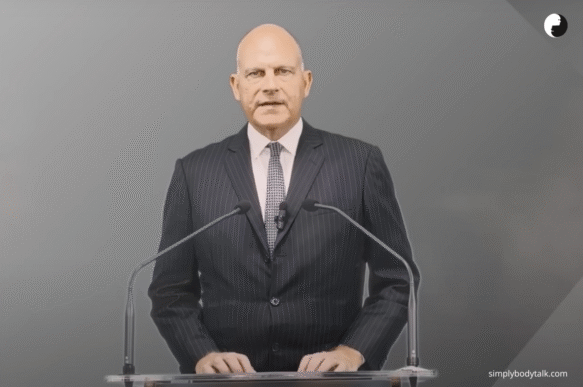Air India Plane Crash in Ahmedabad – Lessons for Leaders

WHAT HAPPENDED
On June 12, 2025, tragedy struck when an Air India flight AI171 crashed shortly after takeoff from Ahmedabad, claiming the lives of over 260 people, including nearly all on board and several on the ground. Only one person survived. This marks one of the deadliest aviation disasters in India’s recent history, and the first fatal crash involving a Boeing 787 since its introduction.
HANDLING THE MEDIA INTERVIEW
As the world mourns, the spotlight inevitably shifts to how leadership responds – especially in front of the media, where words must balance accountability, clarity, and compassion.
Everyone turns to the company’s leadership to know what happened, what happens next, what are the repercussions and so on. Each person has a different reason to want to hear the leadership – the dear ones of those directly affected by the tragedy, the customers, the vendors, the investors, the employees and so on. Each one would like to be reassured that their trust is with the right brand so living up to the trust becomes absolutely critical.
RIGHT PERSON FOR THE COMMUNICATION
Each organization has one person who would represent the voice of the company in case of unfortunate incidents like these and usually the person would be the relevant CXO of the brand. In this case ideally it would be the CEO Campbell Wilson. And he did give an official video statement to the same extent.
But that did not mean that the media would not stop trying to interview other leaders from the company. Air India’s Chairman, Natarajan Chandrasekaran, addressed the media just a few hours after the crash took place on June 12, 2025. In the late afternoon, he appeared on-site and via official channels to express sorrow, announce immediate relief measures, and share key updates.
Here, the dilemma would be whether Chandrasekaran should have spoken or not. Don’t comment and the media would say the leadership refused to comment. Speak something inappropriate and the media would start criticising him publicly. The way he handled the communication is great, and worth spending some moments analysing.
FILLERS IN SPEECH
For most public speaking moments, it is advised that the speaker should avoid using too many fillers (yours aaaaa’s and ummmmm’s) and having long pauses that are not purposeful because these can make your audience lose interest and for you to come across as a less impactful speaker. However in a tragic situation like this, the fillers and pauses are not out of place. In fact, when the leader is pausing, hesitating and finding it difficult to come up with the right words, it somewhere shows how they are equally disturbed by the incident. It also makes them appear mindful to be thinking before reacting because they don’t want to come across as spontaneous.
SHOWCASING EMPATHY THROUGH WORDS
When Air India’s Chairman, N. Chandrasekaran, addressed the media just hours after the crash, he did something every leader should take note of – he led with empathy, not defense. Instead of listing procedures or waiting for a detailed investigation, he acknowledged the heartbreak. He said, “We are deeply saddened…” and you could hear the weight of it. That kind of language matters. You can hear him meaning it when he says “I am equally anxious..”, “.. I have no words..” and so on. It shows he is not just representing a company, he is showing up as a human being. He took personal ownership, made sure families were mentioned first, and offered a clear commitment: compensation, support teams, and a focus on relief, not reputation. In moments like this, what a leader says, and how quickly they say it, sets the tone for everything that follows.
SHARING INFORMATION
Another thing Chandrasekaran did well, and this often gets overlooked, is knowing when not to speak. He made it clear that in times like these, there should be just one authoritative voice, and that voice, in this case, was the government. He said he didn’t want to comment out of turn or confuse the public by sharing unverified or overlapping information. That shows discipline. It also shows respect for the process, for those managing the crisis on the ground, and for the families waiting for clarity. In a media environment hungry for statements, knowing when to hold back is just as important as knowing what to say.
REPEATING THE SAME INFORMATION
Listen to the video clip below of Air India Chairman speaking with India Today almost 4 hours after the above interview with CNBC TV18. You can hear similar kind of questions being asked in this interview as well. Imagine doing this for more than 4 hours. Now it can get tricky because usually when one is asked difficult questions the first time, one needs time to think and respond and that comes across as thoughtful even when one pauses a lot or uses too many fillers. But when the same questions are answered again and again, one would become fluent in taking up that particular question. And yet your hear an equal amount of thoughtfulness in Chandrasekaran’s replies – pauses, use of empathy, enough fillers to suggest that he is still finding it difficult to come to terms with the tragedy.
BODY LANGUAGE OF CEO
- Use of dark colors as dressing and backdrop to signal the tragedy that has struck people and the brand
- Showing his hands very clearly on the dias to signal that people can fully trust the brand to do what needs to be done
- Maintaining direct eye contact with the camera (which is also where his teleprompter is) to suggest he wants to connect with the viewer directly
- No shakiness in voice and body also not tensed up indicating that although the situation is critical, as the leader, he is shaken but not so much that he cannot make the right decisions under pressure.
- No use of hand gestures to illustrate points being made, signaling that this is a response that demands more thoughtfulness and less spontaneity, and helping the audience to fully focus on each word being said

PROMISE OF THE CEO
The verbal communication of the CEO is as would be expected. Campbell didn’t rush to explain or defend. Instead, he expressed genuine sorrow, promised factual updates (no speculation), and made it clear that the airline was fully cooperating with investigators. He also mentioned that support teams were already on the ground in Ahmedabad, and a dedicated helpline had been activated for families. Importantly, he didn’t try to speak like an investigator or a technical expert—he stayed in his lane as a leader, focused on care, clarity, and calm. That’s a valuable lesson for any executive preparing for high-stakes communication: show up early, speak with heart, and don’t try to know more than you do.
TO CONCLUDE
Like for every other situation where leaders do a scenario analysis, the media team of the company would also have done their analyses of how to handle situations like these. While steps would start being taken almost immediately, it is absolutely critical to show the face of the brand and have them give a statement. Preparing for giving out such information always helps because you would know how to stay poised, empathetic, focused and action oriented through your demeanor. At the same time your communication would need to include the right words, owning up accountability without sounding defeated or defensive. Preparing for such moments well in advance is always helpful.
HOW WE CAN HELP
Simply Body Talk has been working with senior leaders over the years, equipping them with the right toolset of self assessment, analysis, practice and scenario preparation so that they are ready for any situation that comes their way. While no matter of preparation can guarantee how a leader would be able to handle themselves in the moment of criticality, preparing vigorously for the same does help to think on the feet and be the leader that you would have been entrusted to be, by your people.
Explore about how we can work with you to sharpen your leadership skills or to understand your organisation’s structure and help you to plan and improve work productivity and improve the overall efficiency from top down. Inquire with us on +91 9930941534
REFERENCES:
- https://www.youtube.com/watch?v=oFObIFPoFfA
- https://www.washingtonpost.com/world/2025/06/12/air-india-ai171-crash-ahmedabad-london/
- https://www.youtube.com/watch?v=WIL1sHCaL6Uhttps://www.youtube.com/watch?v=ta2Ys1YMU-w
- https://economictimes.indiatimes.com/industry/transportation/airlines-/-aviation/ahmedabad-plane-crash-air-india-activates-emergency-centre-deploys-support-teams-for-families-says-chairman/articleshow/121799773.cms
- https://timesofindia.indiatimes.com/business/india-business/ahmedabad-plane-crash-air-india-ceo-campbell-wilson-reacts-says-its-a-difficult-day-for-us/articleshow/121807436.cms






















